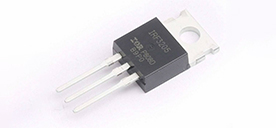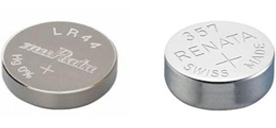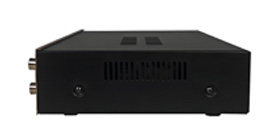A Comprehensive Exploration of CR1616 and CR1632 Batteries
2024/6/8 16:35:10
Views:
CR1616 and CR1632 batteries, belonging to the CR series of lithium coin cell batteries, are integral power sources for a multitude of small electronic devices. These components are essential in many applications due to their small size, consistent voltage output, and dependability. This comprehensive analysis delves into every aspect of these batteries, from their intricate specifications to their wide-ranging applications and beyond.
- Introduction
- Specifications of CR1616 and CR1632 Batteries
- Applications of CR1616 and CR1632 Batteries
- Features of CR1616 and CR1632 Batteries
- Safety Features of CR1616 and CR1632 Batteries
- Equivalent Models of CR1616 and CR1632 Batteries
- Environmental Impact of CR1616 and CR1632 Batteries
- Detailed Manufacturing Process of CR1616 and CR1632 Batteries
- Market Trends and Future Outlook for CR1616 and CR1632 Batteries
- User Tips and Recommendations for CR1616 and CR1632 Batteries
- Conclusion
-
Introduction
CR1616 and CR1632 batteries are small, versatile power sources that are commonly used in a wide range of electronic devices. With their small size and reliable performance, these batteries have become essential components in devices such as remote controls, watches, calculators, key fobs, and medical devices. Offering a stable voltage output and long-lasting power, CR1616 and CR1632 batteries are trusted by consumers and manufacturers alike for their durability and efficiency.
CR1616 Battery:
Step into the world of the Lithium CR1616, a marvel of miniaturization and power. This battery, which has the dimensions of just 16 millimeters (0.63 inches) in diameter and 1.6 millimeters (0.06 inches) in height, is aptly named '1616', a common sight on labels worldwide. Despite its compact size, weighing only between 1.1 and 1.3 grams, the cr1616 3v battery near me packs a punch. Its versatility knows no bounds, finding its niche in an astonishing array of devices. From the precision of laser pointers to the life-saving reliability of insulin pumps, the battery cr1616 3v powers heart rate monitors, toys, watches, cameras, calculators, car security alarms, keyless car remotes, organizers, and a plethora of computer equipment. Resilient against the elements, these batteries defy extreme temperatures, retaining their charge for an impressive eight years in storage, ensuring readiness when duty calls.
CR1632 Battery:
Enter the domain of the CR1632 battery, a stalwart guardian of consistent voltage and reliability. Crafted with meticulous attention to detail, this battery maintains a delicate balance between power and portability, making it an ideal choice for both everyday use and storage convenience. Designed to deliver unwavering performance, the CR1632 stands as a beacon of endurance, ensuring your gadgets remain powered for the long haul. Its versatility knows no bounds, seamlessly integrating into a diverse range of devices, including calculators, cameras, heart rate monitors, and a host of other electronic companions. Unfazed by the vagaries of temperature, these batteries exhibit remarkable resilience, capable of withstanding a wide spectrum of environmental conditions. With a shelf life that seems to stretch into eternity and a capacious reservoir for energy storage, the button battery cr1632 emerges as the undisputed champion, providing a reliable power source for all your miniature electronic needs.

CR1616 VS CR1632 Dimensions
Specifications of CR1616 and CR1632 Batteries
CR1616 Battery:
- Nominal Voltage: 3 volts
- Diameter: 16mm
- Height: 1.6mm
- Chemistry: Lithium Manganese Dioxide (Li-MnO2)
- Capacity: Typically around 55mAh
- Operating Temperature Range: -30°C to 60°C
- Shelf Life: Up to 10 years
- Self-Discharge Rate: Less than 1% per year
CR1632 Battery:
- Nominal Voltage: 3 volts
- Diameter: 16mm
- Height: 3.2mm
- Chemistry: Lithium Manganese Dioxide (Li-MnO2)
- Capacity: Typically around 125mAh
- Operating Temperature Range: -30°C to 60°C
- Shelf Life: Up to 10 years
- Self-Discharge Rate: Less than 1% per year
Applications of CR1616 and CR1632 Batteries
CR1616 Battery:
- Key Fobs and Remote Controls: Powering remote entry systems for vehicles, garage doors, and home security systems.
- Calculators: Providing reliable power for basic and scientific calculators in academic, financial, and engineering settings.
- Digital Thermometers: Energizing temperature-sensing apparatuses for industrial and medicinal uses, guaranteeing precise measurements.
- Glucometers: Powering blood glucose meters for diabetes management, facilitating regular monitoring of blood sugar levels.
- Electronic Sensors: Providing power for various sensors used in IoT (Internet of Things) devices for monitoring and data collection.
CR1632 Battery:
- Watches: Serving as the primary power source for analog and digital wristwatches, ensuring accurate timekeeping.
- Fitness trackers: The brains behind wearable fitness gear that monitors physical activity, heart rate, and sleeping patterns.
- Medical Devices: Powering up a range of implanted and portable medical equipment, including insulin pumps, heart rate monitors, and hearing aids.
- Electronic Toys: Providing power for interactive toys, handheld gaming devices, and educational gadgets, entertaining users of all ages.
- Car Key Fobs: Powering remote keyless entry systems and immobilizer units in modern vehicles, enhancing convenience and security.
- Backup Memory: Used in some electronic devices to maintain memory backup, ensuring data retention during power loss or battery replacement.
Features of CR1616 and CR1632 Batteries
- High Energy Density: Despite their small size, CR1616 and CR1632 batteries offer exceptional energy density, allowing them to deliver sufficient power for extended periods.
- Long Shelf Life: These batteries provide dependability when needed because they have a ten-year shelf life that allows them to be stored for lengthy periods of time without losing charge.
- Low Self-Discharge Rate: The self-discharge rate of less than 1% per year minimizes energy loss during storage, maximizing the usable lifespan of the batteries.
- Stable Voltage Output: Both CR1616 and CR1632 batteries maintain a consistent voltage output of 3 volts throughout their discharge cycle, supporting the uninterrupted operation of electronic devices.
- Broad Operating Temperature Range: These batteries can withstand harsh weather conditions because of their strong performance over a wide range of temperatures.
- Leakage Resistance: Utilizing lithium chemistry, CR1616 and CR1632 batteries demonstrate excellent resistance to leakage, ensuring the integrity of the devices they power.
Safety Features of CR1616 and CR1632 Batteries
CR1616 and CR1632 batteries are designed with multiple safety features to mitigate potential hazards and ensure the safe operation of electronic devices. These safety features are crucial for preventing accidents, such as overheating, short circuits, and damage to the battery or the device it powers. Let's delve into each safety feature in detail:
1. Overcurrent Protection:
Overcurrent protection is a vital safety feature incorporated into CR1616 and CR1632 batteries to safeguard against excessive current flow. This feature helps prevent the battery from delivering a current beyond its specified limit, which could lead to overheating, electrolyte leakage, or even rupture of the battery cell. Overcurrent protection mechanisms typically include:
- Current Limiting Circuitry: Integrated circuitry within the battery regulates the flow of current, ensuring it remains within safe limits.
- Fusible Link: A fusible link may be incorporated into the battery design to disconnect the circuit in case of excessive current flow, effectively cutting off power to prevent damage.
2. Short-Circuit Prevention:
Short-circuit prevention is another essential safety feature employed in CR1616 and CR1632 batteries to mitigate the risk of short circuits, which can occur due to improper handling, installation, or damage to the battery or its contacts. Short-circuit prevention mechanisms may include:
- Internal Insulation: Insulating materials within the battery casing prevent internal components from coming into contact with each other, reducing the likelihood of short circuits.
- External Insulation: The battery casing itself is designed to provide external insulation, preventing accidental contact with conductive materials or surfaces that could create a short circuit.
- Built-in Protection Circuit: Some batteries may include a built-in protection circuit that detects and responds to short-circuit conditions by temporarily interrupting the flow of current.
3. Thermal Shutdown:
Thermal shutdown is a critical safety feature implemented in CR1616 and CR1632 batteries to prevent overheating, which can occur due to excessive current draw, environmental factors, or internal faults. When the battery temperature exceeds a predefined threshold, the thermal shutdown mechanism activates to protect the battery and surrounding components. Key aspects of thermal shutdown include:
- Temperature Sensors: Built-in temperature sensors monitor the battery's temperature continuously, detecting any abnormal rise in temperature.
- Control Circuitry: Upon detecting excessive heat, the control circuitry triggers the thermal shutdown mechanism, which may include interrupting the current flow or disconnecting the battery temporarily.
- Automatic Reset: Once the temperature returns to a safe level, the thermal shutdown mechanism resets automatically, allowing normal operation to resume without intervention.
CR1616 and CR1632 batteries incorporate a range of sophisticated safety features to mitigate potential risks and ensure the reliable and safe operation of electronic devices. From overcurrent protection to short-circuit prevention and thermal shutdown mechanisms, these batteries are engineered to deliver power efficiently while prioritizing user safety. By implementing robust safety measures, manufacturers can instill confidence in consumers regarding the performance and reliability of CR1616 and CR1632 batteries across diverse applications.
Equivalent Models of CR1616 and CR1632 Batteries
CR1616 and CR1632 batteries are widely used in various electronic devices, and they are available under different designations or equivalent models manufactured by various companies. These equivalent models offer similar specifications and performance characteristics, allowing consumers to choose from a range of options based on availability and brand preferences. Here are some common equivalent models for CR1616 and CR1632 batteries:
CR1616 Equivalent Models:
- DL1616: Manufactured by Duracell, DL1616 batteries offer reliable performance and are commonly used in key fobs, watches, and small electronic devices.
- ECR1616: Made by Energizer, these batteries are renowned for their durability and may be used in a variety of settings, such as medical equipment and remote controls.
- BR1616: BR1616 batteries are manufactured by Panasonic and are widely used in automotive electronics, calculators, and electronic toys. Their endurance and consistent voltage output are well-known attributes.
- KCR1616: KCR1616 batteries are produced by various manufacturers and are commonly found in consumer electronics, such as digital cameras, handheld gaming devices, and remote controls.
CR1632 Equivalent Models:
- DL1632: Manufactured by Duracell, DL1632 batteries are known for their high energy density and long shelf life. They are suitable for applications such as keyless entry systems and digital thermometers.
- ECR1632: Produced by Energizer, ECR1632 batteries offer reliable performance and are commonly used in medical devices, remote controls, and small electronic gadgets.
- BR1632: BR1632 batteries are manufactured by Panasonic and are ideal for applications requiring high energy density and stable voltage output, such as car key fobs and electronic watches.
- KCR1632: KCR1632 batteries are produced by various manufacturers and are suitable for a wide range of electronic devices, including calculators, sensors, and fitness trackers.
Importance of Equivalent Models:
Availability: Offering equivalent models allows consumers to choose from a variety of brands and suppliers, increasing the availability of CR1616 and CR1632 batteries in the market.
Compatibility: Equivalent models are designed to meet the same specifications and performance standards as CR1616 and CR1632 batteries, ensuring compatibility with a wide range of electronic devices.
Brand Preferences: Some consumers may have preferences for specific battery brands based on past experiences or recommendations. Equivalent models provide options that cater to these preferences.
Flexibility: Having multiple equivalent models gives consumers flexibility in sourcing batteries based on availability, price, and brand reputation, ensuring they can find suitable replacements when needed.
By offering equivalent models alongside CR1616 and CR1632 batteries, manufacturers provide consumers with a diverse range of options while maintaining consistent performance and reliability across different brands and suppliers. This enhances convenience and satisfaction for consumers and promotes healthy competition in the battery market.
Environmental Impact of CR1616 and CR1632 Batteries
CR1616 and CR1632 batteries, like all electronic products, have environmental implications throughout their lifecycle. It is essential to comprehend these effects in order to put sustainable strategies into action and lessen environmental harm. Let's examine these batteries' effects on the environment in more detail:
1. Manufacturing Processes:
The manufacturing of CR1616 and CR1632 batteries involves several processes, each with its own environmental implications:
- Lithium Mining: Lithium, a key component of these batteries, is primarily sourced through mining operations. Significant environmental effects of lithium extraction may include soil contamination, water pollution, and habitat damage.
- Battery Production: The production of lithium coin cell batteries involves the use of raw materials such as lithium, manganese dioxide, and other metals. Manufacturing processes, such as chemical synthesis and electrode fabrication, may generate waste and emissions, contributing to pollution and resource depletion.
2. Use Phase:
- During the use phase, CR1616 and CR1632 batteries power electronic devices, contributing to energy consumption and carbon emissions. While these batteries are known for their long lifespan and energy efficiency, their continuous use still has environmental implications, especially if devices are not used efficiently or disposed of improperly.
3. Disposal and Recycling:
- The disposal of CR1616 and CR1632 batteries at the end of their lifespan can pose environmental challenges:
- Waste Generation: Improper disposal of batteries contributes to electronic waste (e-waste), which can accumulate in landfills and release toxic substances into the environment.
- Resource Recovery: Recycling batteries is crucial for recovering valuable materials like lithium, manganese, and other metals. Efficient recycling procedures decrease environmental effect, cut down on the need to extract raw materials, and preserve natural resources.
4. Eco-Friendly Initiatives:
- To address environmental concerns, manufacturers of CR1616 and CR1632 batteries are increasingly adopting eco-friendly initiatives:
- Sustainable Sourcing: Some manufacturers prioritize sourcing raw materials from responsible suppliers and regions with stringent environmental regulations to minimize the ecological footprint of lithium extraction.
- Energy Efficiency: Improvements in manufacturing processes and energy efficiency help reduce the environmental impact of battery production by lowering energy consumption and greenhouse gas emissions.
- Recycling Programs: Manufacturers may establish or support battery recycling programs to encourage consumers to dispose of used batteries properly and facilitate the recovery of valuable materials for reuse.
CR1616 and CR1632 batteries play a vital role in powering electronic devices, but their production, use, and disposal have environmental implications. By understanding these impacts and implementing sustainable practices, manufacturers can minimize environmental harm throughout the lifecycle of these batteries. By using batteries effectively, recycling them appropriately, and supporting environmentally friendly activities in the battery sector, consumers may also help conserve the environment. Together, we can work towards a more sustainable future where electronic products like CR1616 and CR1632 batteries have minimal environmental impact.
Detailed Manufacturing Process of CR1616 and CR1632 Batteries
The manufacturing process of CR1616 and CR1632 batteries is a multi-step procedure that involves precise techniques and quality control measures to ensure the production of high-quality batteries. Below is a detailed breakdown of every step of the manufacturing process:
1. Electrode Preparation:
The electrode preparation stage is where the active materials are applied to metal foils to create the positive and negative electrodes of the battery:
- Coating Preparation: Active materials, such as lithium and manganese dioxide, are mixed with binders and solvents to form a slurry.
- Foils Coating: Metal foils, typically made of copper for the positive electrode and aluminum for the negative electrode, are coated with the slurry using a precision coating machine. The regularity and consistency of the coating are guaranteed through meticulous management of its thickness.
- Drying and Calendering: The coated foils are dried in ovens to remove solvent and binders, leaving a thin layer of active material on the foils. Calendering processes may also be employed to compress and smooth the electrode layers for optimal performance.
2. Cell Assembly:
The cell assembly stage involves stacking the prepared electrodes with separators and electrolytes to form the battery cell:
- Electrode Stacking: Alternating layers of positive and negative electrodes are stacked with porous separators in between to prevent short circuits.
- Electrolyte Injection: A precisely measured amount of electrolyte, typically a lithium salt dissolved in a solvent, is injected into the assembled cell to facilitate ion transport and electrochemical reactions.
- Sealing: The assembled cell is sealed in a coin-shaped casing, usually made of stainless steel or aluminum, to encapsulate the electrodes and electrolyte securely. Sealing is often done using laser welding or crimping techniques to ensure a hermetic seal and prevent leakage.
3. Quality Control:
Quality control is an essential aspect of the manufacturing process to ensure that each battery meets stringent performance and safety standards:
- Voltage Testing: Batteries are subjected to voltage testing to verify that they meet the specified nominal voltage of 3 volts. Any variations from the desired voltage are found and fixed.
- Testing a battery's capacity determines how much charge it can store and produce under particular circumstances. Batteries are discharged and charged under controlled parameters to assess their capacity accurately.
- Leakage Resistance Testing: Leakage resistance testing is performed to ensure that the sealed battery casing effectively prevents electrolyte leakage. Batteries are subjected to pressure and temperature tests to detect any signs of leakage or structural weaknesses.
4. Packaging:
The final step in the manufacturing process is packaging the batteries for distribution:
- Labeling and Marking: Batteries are labeled with product information, including brand, model number, specifications, and safety warnings. Markings indicating recycling information and environmental certifications may also be included.
- Packaging Design: Batteries are packaged in blister packs, trays, or boxes for protection during shipping and handling. Packaging materials are chosen for durability and recyclability to minimize environmental impact.
- Documentation: Product documentation, such as user manuals or safety data sheets, may be included in the packaging to provide consumers with important information about the batteries and their safe use.
The production of CR1616 and CR1632 batteries is a multi-stage, meticulous process that starts with electrode preparation and ends with quality control and packing. By adhering to strict manufacturing standards and quality assurance protocols, manufacturers ensure the production of reliable and high-performance batteries that meet the demands of various electronic applications. Continuous improvement and innovation in manufacturing processes contribute to the efficiency, consistency, and sustainability of battery production.
Market Trends and Future Outlook for CR1616 and CR1632 Batteries
The market for CR1616 and CR1632 batteries is dynamic and evolving, shaped by technological advancements, changing consumer preferences, and environmental considerations. It is imperative that anyone involved in the battery industry comprehend both the present trends and the future opportunities. Here's a detailed analysis of the market trends and future outlook for CR1616 and CR1632 batteries:
1. Increasing Demand:
- Consumer Electronics: The proliferation of smartphones, wearable devices, and portable electronics drives the demand for compact and reliable power sources like CR1616 and CR1632 batteries.
- Medical Devices: The healthcare industry increasingly relies on electronic medical devices, such as glucose monitors, hearing aids, and remote patient monitoring systems, creating a steady demand for long-lasting batteries.
- Industrial Applications: Industrial automation, IoT sensors, and remote monitoring systems require dependable power sources for continuous operation in harsh environments, fueling demand for high-performance batteries.
2. Emerging Technologies:
- Wearable Technology: The rise of wearable devices for fitness tracking, health monitoring, and smartwatches presents new opportunities for battery applications. CR1616 and CR1632 batteries, with their compact size and stable performance, are well-suited for powering wearable gadgets.
- IoT Devices: The proliferation of IoT devices for home automation, environmental monitoring, and asset tracking drives demand for energy-efficient batteries with long lifespans. CR1616 and CR1632 batteries play a crucial role in powering these devices reliably.
- Electric vehicles (EVs): More and more batteries with greater energy density and longer lifespans are needed as the automobile industry moves toward electrification. While CR1616 and CR1632 batteries are not suitable for EV propulsion, they find applications in key fobs, tire pressure sensors, and other auxiliary systems in electric vehicles.
3. Sustainability Focus:
- Environmental restrictions: Manufacturers implement sustainable techniques in battery production in response to strict environmental restrictions and consumer desires for eco-friendly products. This includes reducing carbon emissions, minimizing waste generation, and optimizing resource utilization.
- Recycling Initiatives: Battery recycling programs are gaining traction as stakeholders recognize the importance of conserving resources and minimizing e-waste. Manufacturers are investing in battery recycling infrastructure and educating consumers about the importance of proper disposal and recycling of batteries.
- Green technologies: The goal of research and development is to create environmentally friendly battery chemistries, like recyclable materials and solid-state batteries. These advancements aim to enhance the sustainability of batteries while maintaining performance and safety standards.
The CR1616 and CR1632 battery market is expected to have sustained expansion and novelty due to growing demand from various industries and technological breakthroughs. The use of eco-friendly materials and production processes in the battery industry is being driven by the growing attention on sustainability among manufacturers, customers, and regulatory agencies. As the demand for reliable and sustainable power sources continues to rise, CR1616 and CR1632 batteries are expected to play a significant role in powering a wide range of electronic devices and emerging technologies in the years to come.
User Tips and Recommendations for CR1616 and CR1632 Batteries
Batteries CR1616 and CR1632 are dependable power sources that are frequently utilized in a variety of electronic gadgets. To ensure optimal performance, longevity, and environmental sustainability, users should follow these practical tips and recommendations:
Proper Handling, Storage, and Disposal:
1. Handle with Care: Avoid mishandling or dropping batteries, as physical damage can lead to leakage or reduced performance. Hold batteries by the edges and avoid touching the contacts.
2. Keep unused batteries away of direct sunlight and excessively hot or cold conditions by storing them in a cool, dry place. Elevated temperatures have the potential to hasten self-discharge and shorten battery life.
3. Keep Metal Objects Away: Keep batteries away from metal items like coins, keys, and other battery types. A short circuit caused by contact with metal might result in overheating or leakage.
4. Dispose Properly: When getting rid of old batteries, make sure you abide by your community's recycling and disposal policies. Batteries can be dropped off at authorized recycling sites or places in many municipalities. Batteries should not be disposed of or burned because doing so can damage the environment.
5. Recycle wherever Possible: To recover valuable materials and reduce environmental effect, recycle spent batteries wherever possible. Recycling lessens the need to extract raw materials, which conserves resources. Remember to handle, store, and dispose of batteries properly to protect the environment and promote sustainability.
Selecting the Appropriate Battery Type and Size:
1. Check Device Specifications: Before purchasing replacement batteries, check the specifications of your electronic device to ensure compatibility with CR1616 or CR1632 batteries. Pay attention to voltage, size, and chemistry requirements.
2. Take Power Requirements into Account: Evaluate your device's power needs to get the right battery size. Batteries with larger capacity ratings may be advantageous for devices with high power consumption.
3. Select Reputable Brands: Choose batteries from brands that are respected and well-known for their dependability and quality. Generic or off-brand batteries could be less expensive, but their longevity and performance might not match that of reputable brands.
4. Size and Form Factor: Ensure that the battery size and form factor match the requirements of your device. CR1616 and CR1632 batteries have different dimensions and capacities, so choose the size that fits your device's battery compartment.
5. Longevity vs. Cost: Consider the balance between battery longevity and cost. While higher-capacity batteries may offer longer lifespan, they may also be more expensive. Evaluate your budget and performance requirements accordingly.
By following these user tips and recommendations, you can maximize the lifespan of CR1616 and CR1632 batteries, minimize environmental impact, and ensure optimal performance for your electronic devices. Battery handling, storage, and disposal should always be done responsibly to protect the environment and promote sustainability.
Conclusion
The CR1616 and CR1632 batteries are essential parts of contemporary electronics because they are dependable, efficient, and adaptable. From powering everyday devices like watches and calculators to facilitating advanced medical implants and IoT sensors, these batteries play a vital role in powering the technologies that enhance our lives. With their compact size, stable performance, and wide-ranging applications, CR1616 and CR1632 batteries continue to drive innovation and connectivity in the ever-evolving landscape of electronic devices.
Related Information
-
-
Phone
+86 135 3401 3447 -
Whatsapp





